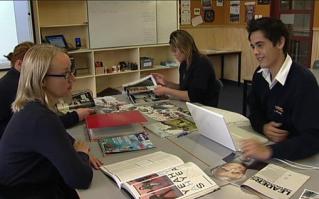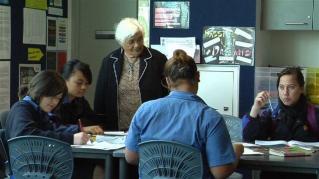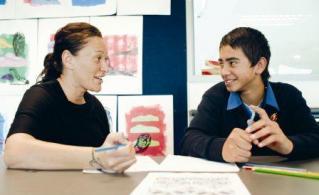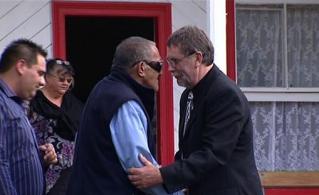Section navigation

The stakeholders in this clip are the principal, three teachers and two senior students. They compare the more traditional approach to teaching and learning with the new approach at Taihape Area School, which encourages students to be more autonomous learners and independent thinkers. We hear about the actions that needed to be taken in order to change, and the benefits of those actions.
Questions / Things to think about / Activities
- In what ways have the teachers at Taihape Area School tried to ‘craft’ the learning to ‘fit’ their students? What is the role of the teacher; for example, facilitating goal setting, and posing questions? What is the role of the student; for example, finding out information? What are the benefits; for example, autonomous learners, creative thinkers, and engaged young people?
- How can we make our teaching more effective, so that we are ‘encouraging reflective thought and action’, ‘enhancing the relevance of new learning’, ‘facilitating shared learning’, and ‘providing sufficient opportunities to learn’ (NZC pp34-36)?
- How might we maximise the evidence about using an inquiry approach with Māori students? (See p 21 in Key evidence: Ka Hikitia re ‘ako’ and inquiry learning.)
- How are we giving effect to the vision in The New Zealand Curriculum, to create students who are competent, connected, actively involved, life-long learners (NZC p8)?
- Similarly, how are we honouring the principles that underpin the development of an effective school curriculum, especially the principle of ‘learning to learn’ (NZC p9)?
- How can we promote the values of ‘excellence’ and ‘innovation, and inquiry and curiosity’ as outlined in The New Zealand Curriculum (NZC p10)?
- What can we do to help students demonstrate the key competencies, especially ‘thinking’ and ‘managing self’ (NZC pp12-13)?
Filed under: Productive partnerships | Ako | Effective leaders | Effective teachers





